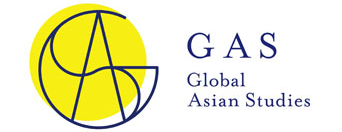第25回GJS講演会多様化と収斂――明治日本における機関車技術の発展
| 日時: | 2018年1月19日(金), 15:00~17:00 |
|---|---|
| 会場: | 東京大学東洋文化研究所 第一会議室(3階) |
| 講演者: | 中村尚史教授(東京大学社会科学研究所副所長) |
| 使用言語: | 英語 |

発表概要: The main purpose of this talk is to clarify the process of railway technology development in Japan during the Meiji era (1868-1912) while focusing on the role of railway engineers and their technical imitation. The process of railway technology development in Japan can be divided into four stages: (1) transfer of railway systems from the UK by the Japanese government,1870s-1880s; (2) acquisition of railway materials from the US and Germany and diversification of technology, 1890s; (3) standardization and convergence of technology through the merger and nationalization of railway networks, 1900s; and (4) development of original technology by the government railway, 1910s. This paper focuses on the diversification and convergence of technology (stages 2, 3, and 4), while keeping this step-wise development in mind, and examines the process of technological diversification and convergence, primarily through the example of locomotives and locomotive engineers, that represent cutting-edge machine technology at the time.
It is true that underlying Japan’s advancement from imitation to original design were the formation of a cadre of Japanese engineers in both the government railway and private railway companies and the manufacturing know-how cultivated through the copying of a wide variety of model locomotives. In the context of the first wave of globalization occurring around the transition from the 19th to the 20th century, the ability to freely choose from among the most advanced railway materials offered by different countries around the world contributed to the diversification of technology and concomitant accumulation of experience. It was the convergence of this technology and know-how that bore fruit in the development original technology. 主催:東京大学国際総合日本学ネットワーク(GJS)共催:東京大学東洋文化研究所
問い合わせ:gjs[at]ioc.u-tokyo.ac.jp



